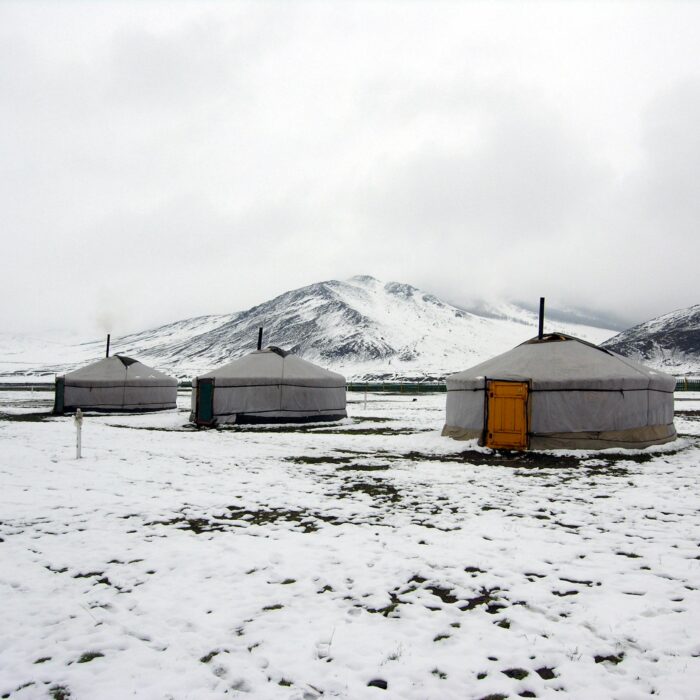Quick facts about Chad:
- Population: Approximately 20.5 million people.
- Capital: N’Djamena.
- Official Languages: French and Arabic.
- Other Languages: Over 120 indigenous languages, including Chadian Arabic, Sara, and Kanembu.
- Currency: Central African CFA franc (XAF).
- Government: Unitary presidential republic.
- Major Religion: Islam in the north and Christianity in the south, with traditional African religions also practiced.
- Geography: Landlocked country in north-central Africa, bordered by Libya to the north, Sudan to the east, the Central African Republic to the south, and Cameroon, Nigeria, and Niger to the west. Chad’s landscape includes deserts in the north, the Sahel in the center, and savannas in the south.
Fact 1: A substantial area of Chad is occupied by the Sahara Desert
Substantial area of Chad is indeed occupied by the Sahara Desert, which covers roughly the northern third of the country. This arid, sandy region is characterized by extreme temperatures, minimal rainfall, and sparse vegetation. The Sahara’s reach in Chad includes features like the Tibesti Mountains in the northwest, which contain the country’s highest peak, Emi Koussi, at about 3,445 meters.
The Sahara’s presence in Chad significantly influences the country’s climate and way of life in the northern regions, where population density is very low due to the harsh environment. Nomadic pastoralists, such as the Tubu people, traditionally inhabit this area, relying on livestock and adapted survival strategies in one of the driest environments on Earth.
Fact 2: Chad has several hundred ethnic groups
Chad is highly diverse, with over 200 distinct ethnic groups. This diversity reflects a variety of languages, cultures, and religious practices across the country. The largest groups include the Sara, who primarily inhabit the south, and the Arab-speaking groups, who are prominent in the central and northern regions. Other significant groups include the Kanembu, Tubu, and Hadjerai.
Each of these ethnic communities brings unique customs, languages, and social structures, often shaped by their environments—such as agricultural lifestyles in the south and nomadic pastoralism in the north. This rich ethnic tapestry, while culturally significant, has at times led to social and political tensions, especially as different groups vie for resources and political influence.
Fact 3: The country was named after Lake Chad
The name “Chad” is derived from the Kanuri word Tsade, meaning “lake” or “large body of water.” Lake Chad has been a crucial source of water, supporting agriculture, fishing, and livelihoods for communities in Chad and neighboring countries, including Nigeria, Niger, and Cameroon.
However, Lake Chad has significantly shrunk over recent decades due to climate change, drought, and increased water use, going from about 25,000 square kilometers in the 1960s to less than 2,000 square kilometers in recent years. This decline has had serious environmental and economic impacts on the region, as millions depend on the lake for sustenance and trade.
GRID-Arendal, (CC BY-NC-SA 2.0)
Fact 4: Chad is rich in natural resources
The discovery of oil in the 1970s and the start of production in 2003 marked a significant shift in the country’s economy. Oil exports now account for a major share of Chad’s revenue, contributing substantially to government income. The Doba Basin, located in the southern part of the country, is one of the primary areas for oil extraction, with pipelines running to the coast of Cameroon for export.
In addition to oil, Chad has deposits of valuable minerals, including gold, uranium, limestone, and natron (sodium carbonate). Gold mining, often informal, is concentrated in the northern regions, while uranium deposits in the north could be a future resource if developed. However, despite its resource wealth, Chad faces challenges in transforming these assets into widespread economic growth, partly due to limited infrastructure, political instability, and governance issues.
Fact 5: Despite its resources, Chad is one of the poorest countries
Despite its natural resources, Chad is consistently ranked among the poorest countries in the world. Around 42% of the population lives below the poverty line, with widespread income inequality and limited economic opportunities outside of agriculture and a narrow resource sector. Poverty in Chad is particularly severe in rural areas, where about 80% of the population lives. Many people rely on subsistence farming and livestock, which are vulnerable to climate conditions and periodic droughts, often resulting in food insecurity and malnutrition.
The country’s economy, while bolstered by oil revenues, has not effectively translated into development for the broader population. Much of the wealth from resources is concentrated among the elite, and corruption remains a significant barrier to equitable economic growth. Additionally, Chad has one of the world’s highest rates of infant mortality and one of the lowest rates of school enrollment and literacy, particularly among girls and women, perpetuating cycles of poverty.
120, CC BY-SA 4.0, via Wikimedia Commons
Fact 6: One of the oldest known human ancestors was discovered in Chad
In 2001, a team of scientists led by Michel Brunet unearthed a skull in the Djurab Desert of northern Chad. This skull, named Sahelanthropus tchadensis and often nicknamed “Toumaï” (meaning “hope of life” in the local Daza language), is estimated to be around 6 to 7 million years old.
Sahelanthropus tchadensis is considered one of the earliest known species in the human evolutionary lineage and provides key insights into the divergence between humans and apes. Its features, including a relatively flat face and small canine teeth, suggest that it may have walked upright, which is a significant characteristic in human evolution. This find challenges previous assumptions that early human ancestors lived only in East Africa, as it extends the known range of early hominins further west.
Fact 7: Chad has some unusual musical instruments
One notable instrument is the Adou, a traditional string instrument that resembles a lute and is played primarily by the Sara people in southern Chad. The Adou is made from a wooden body covered with animal skin and features several strings, often plucked to create melodic tunes that accompany singing and storytelling.
Another interesting instrument is the Banga, a type of percussion instrument that consists of a wooden frame covered with a membrane, similar to a drum. The Banga is used in various traditional dances and ceremonies, showcasing the vibrant musical heritage of the country.
The Kakaki is a prominent and unusual musical instrument in Chad, recognized for its significance in traditional music and ceremonies. It is a long trumpet, typically made of metal or sometimes wood, and can measure up to three meters in length. The Kakaki is characterized by its conical shape and produces a powerful, resonant sound, making it ideal for outdoor performances.
Traditionally, the Kakaki is associated with the Hausa and Kanuri cultures in Chad, as well as in neighboring countries like Nigeria and Niger. It is often played during important events, such as royal ceremonies, celebrations, and festivals, serving both a musical and a ceremonial purpose.
Yacoub D., CC BY-SA 4.0, via Wikimedia Commons
Fact 8: Child marriage is a significant issue in Chad
According to various reports, Chad has one of the highest rates of child marriage in the world, with estimates indicating that about 67% of girls are married before the age of 18. In some areas, this percentage can be even higher.
Child marriage in Chad often stems from economic factors, as families may marry off daughters early to reduce financial burdens or to secure dowries. Additionally, traditional beliefs about gender roles and the perceived value of girls can perpetuate the practice. Early marriage has serious consequences for girls, including limited access to education, increased health risks related to early childbirth, and a higher likelihood of experiencing domestic violence.
Fact 9: There are 2 UNESCO World Heritage sites in the country
Chad has two UNESCO World Heritage Sites:
- Lakes of Ounianga (designated in 2012): This site consists of a series of lakes in the Sahara Desert that showcase a unique ecosystem and are critical for local biodiversity. The lakes are renowned for their striking blue colors and varying salinity, providing important habitats for flora and fauna.
- Ennedi Massif: Natural and Cultural Landscape (designated in 2016): This site features stunning rock formations, canyons, and archaeological sites, including ancient rock art. The Ennedi Massif is not only significant for its natural beauty but also for its cultural heritage, as it contains remnants of human occupation dating back thousands of years.
David Stanley from Nanaimo, Canada, CC BY 2.0, via Wikimedia Commons
Chad is generally considered to be an unsafe country for travel, particularly in certain regions. The U.S. Department of State and other governments have issued travel advisories due to concerns about crime, civil unrest, and the potential for violence, especially in areas near the borders with Libya, Sudan, and the Central African Republic. If you are planning a trip to the country, check for the need for insurance, International Driving Permit to drive in Chad, roaming or local sim card and escort in dangerous regions.
Fact 10: In Chad, there is an unusual festival called Gerewol
Gerewol is an unusual and vibrant festival celebrated by the Wodaabe people, a nomadic ethnic group in Chad and parts of Niger. This festival is notable for its cultural significance and unique practices, particularly its elaborate rituals surrounding courtship and beauty.
Gerewol typically takes place annually during the rainy season and lasts for several days. It is characterized by a series of events, including music, dance, and competitions, where young men display their attractiveness and charm to potential brides. The men paint their faces with intricate patterns, wear traditional clothing, and perform traditional dances, all aiming to impress women and showcase their physical beauty.
One of the highlights of the festival is the “shadi” dance, where participants engage in rhythmic movements and singing, often in a competitive format. Women also play a vital role during the Gerewol, as they evaluate the men’s performances and beauty.

Published November 02, 2024 • 8m to read





